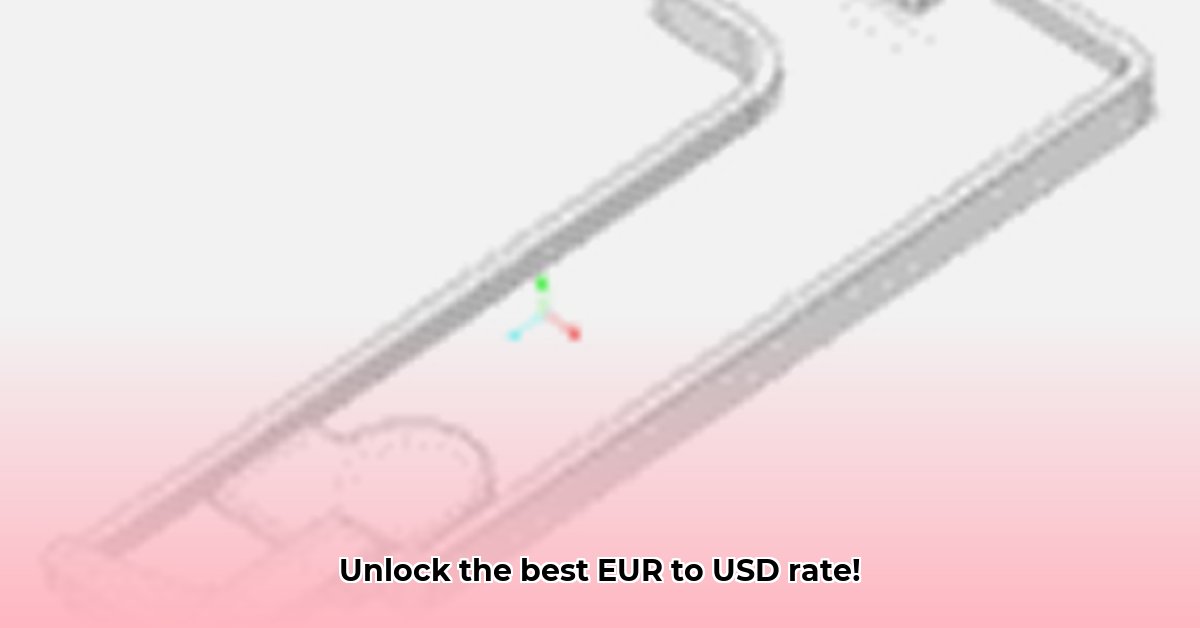
Understanding Currency Exchange: A Quick Guide
Converting 193 euros to US dollars seems simple, but fluctuating exchange rates and hidden fees can significantly impact your final amount. This guide empowers you to get the best possible rate. The EUR/USD exchange rate, like all currency pairs, constantly shifts based on economic factors such as interest rates, inflation, and geopolitical events. Understanding these dynamics is key to minimizing losses. You'll want to pay close attention to the "mid-market rate," the average exchange rate between major banks. This provides a benchmark for comparison, though you'll rarely get this exact rate due to provider fees and profit margins. For more on currency conversion, see this helpful resource: RMB to USD Converter.
Finding the Best Exchange Rate: A Step-by-Step Approach
To maximize your return when converting 193 euros, follow these steps:
Compare Multiple Providers: Don't settle for the first rate you see. Check several sources: your bank, online services like Wise, and local currency exchange bureaus. Each will offer varying rates and fee structures. Have you considered comparing at least three different providers to ensure a competitive rate?
Scrutinize Fees: Hidden fees can significantly diminish your return. Look closely for transfer fees, markup percentages applied to the exchange rate, and any service charges. Transparency is paramount – select providers openly displaying all costs upfront.
Consider Timing (With Caution): While the exchange rate changes constantly, predicting short-term fluctuations is difficult. For a sum as small as 193 euros, daily fluctuations might not dramatically impact your final amount.
Compare Total Costs: When comparing quotes, focus on the total amount received, including all fees. Don't just compare exchange rates in isolation.
Choose Your Transfer Method: How quickly do you need the funds? Wire transfers are typically faster but more expensive than alternative methods. Will your chosen transfer method affect the speed of your transaction and the associated fees?
Unmasking Hidden Fees: Common Pitfalls to Avoid
Hidden fees can unexpectedly erode your conversion gains. Be aware of these common culprits:
Markup: This extra percentage added to the mid-market rate is how many services profit. A seemingly favorable rate can become less advantageous once the markup is factored in.
Transfer Fees: These are charges for processing the transaction.
Service Charges: These are added on top of other fees.
Minimizing Risks: Strategies for Smart Currency Exchange
Even with a smaller amount like 193 euros, taking precautions is wise:
Choose Reputable Providers: Use established banks and reputable online services with a proven track record and positive customer reviews. Thoroughly research before choosing any service.
Read the Fine Print: Always read the terms and conditions carefully before finalizing any transaction. Understand each fee and charge before proceeding.
Diversification (For Larger Amounts): For larger transactions, consider diversifying your exchange across multiple providers or using hedging strategies to mitigate risk.
Provider Comparison: Weighing Your Options
Different providers offer varied benefits and drawbacks:
| Provider Type | Advantages | Disadvantages |
|---|---|---|
| Banks | Established, generally trustworthy, familiar services | Often higher fees, slower service, reduced flexibility |
| Online Services | Typically lower fees, greater transparency, faster service | May require account setup, potential for scams (if not careful) |
| Currency Exchange Bureaus | Convenient, quick service | Typically higher fees than online options, less transparency |
Practical Example: Converting 193 Euros to USD
Let's say the mid-market rate is 1 EUR = 1.10 USD. A bank might offer 1 EUR = 1.08 USD after fees, while Wise might offer 1 EUR = 1.09 USD. This seemingly small difference, when multiplied by 193 euros, translates into a real cost difference.
Key Takeaways: Maximize Your Euro Conversion
- Thorough provider comparison is crucial to securing the best exchange rate.
- Transparency in fees and charges is paramount. Avoid those hidden costs, particularly when exchanging currencies.
- For frequent or high-value transactions, consider using reputable online services known for their competitive rates and clear fees.
Frequently Asked Questions (FAQ)
Q: When is the best time to exchange currency?
A: Predicting the best time is difficult. Exchange rates fluctuate constantly based on market factors. Focusing on comparing fees and rates from multiple providers is often more effective than timing the market.
Q: What's the safest way to transfer money internationally?
A: Using established banks or reputable online money transfer services with robust security measures is generally considered the safest approach. Always check reviews before selecting a provider.